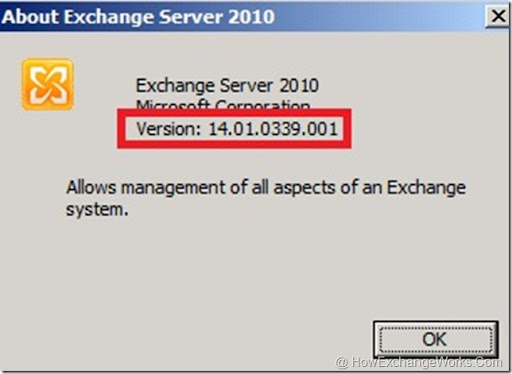
- EXCHANGE 2010 SP3 ROLLUP 14 INSTALL
- EXCHANGE 2010 SP3 ROLLUP 14 UPDATE
- EXCHANGE 2010 SP3 ROLLUP 14 SOFTWARE
EXCHANGE 2010 SP3 ROLLUP 14 UPDATE
Personally I *never* use WSUS for Exchange Update Rollups. I’ve not had the same amount of issues you’ve had, nor do I see customers with the same either.
EXCHANGE 2010 SP3 ROLLUP 14 INSTALL
Update: If you’ve attempted to install via Windows Update and see error 8024002d this may be the underlying cause. Get-ItemProperty “HKLM:\SOFTWARE\Microsoft\Windows\CurrentVersion\Uninstall\” | Select InstallSource If you’re not sure where you installed Exchange, or Service Pack 3 from and don’t want to wait until you’re prompted by the installer, you can try the following PowerShell to retrieve the location: However, you can of course download Exchange 2010 Service Pack 3 and extract to the location you performed the update from. This is unusual, and typically Update Rollups will not require access to the source files. The feature you are trying to use is on a network resource that is unavailable

A word of warning if you’re planning on updating to Update Rollup 2 for Exchange 2010 SP3 – you may receive the following message when you install the Update Rollup, if you don’t have the Exchange Service Pack files in the location you performed the update from: This update rollup does not apply to Exchange Server 2007 Release To Manufacturing (RTM), Exchange Server 2007 Service Pack 1 (SP1) or Exchange Server 2007 Service Pack 2 (SP2).įor a list of update rollups applicable to Exchange Server 2007 RTM, Exchange Server 2007 Service Pack 1 (SP1) or Exchange Server 2007 Service Pack 2 (SP2), refer to the Knowledge Base article KB937052.

This update rollup is highly recommended for all Exchange Server 2007 SP3 customers.įor a list of changes that are included in this update rollup, see KB3151086.
EXCHANGE 2010 SP3 ROLLUP 14 SOFTWARE
Update Rollup 20 for Exchange Server 2007 Service Pack 3 (KB3151086) – Update Rollup 20 for Exchange Server 2007 Service Pack 3 (SP3) resolves issues that were found in Exchange Server 2007 SP3 since the software was released. This update rollup does not apply to Exchange Server 2010 Release To Manufacturing (RTM), Exchange Server 2010 Service Pack 1 (SP1) or Exchange Server 2010 Service Pack 2 (SP2).įor a list of update rollups applicable to Exchange Server 2010 RTM, Exchange Server 2010 Service Pack 1 (SP1) or Exchange Server 2010 Service Pack 2 (SP2), refer to the Knowledge Base article KB937052. This update rollup is highly recommended for all Exchange Server 2010 SP3 customers.įor a list of changes that are included in this update rollup, see KB3151097.

Update Rollup 14 for Exchange Server 2010 Service Pack 3 (SP3) resolves issues that were found in Exchange Server 2010 SP3 RU3 since the software was released. This update rollup is highly recommended for all Exchange Server 2013 customers. This update rollup is highly recommended for all Exchange Server 2016 customers.Ĭumulative Update 13 for Exchange Server 2013 (KB3099522) – Cumulative Update 13 for Exchange Server 2013 resolves issues that were found in Exchange Server 2013 SP1 since the software was released. Cumulative Update 2 for Exchange Server 2016 (KB3135742) – Cumulative Update 2 for Exchange Server 2016 resolves issues that were found in Exchange Server 2016 since the software was released.


 0 kommentar(er)
0 kommentar(er)
